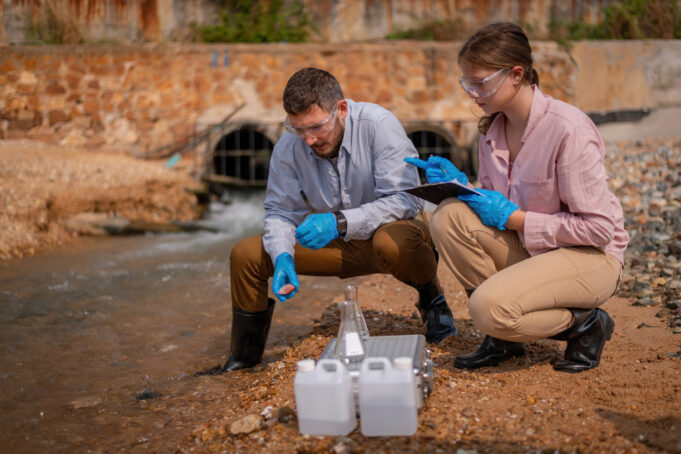Over the last year no subject has quite dominated the world of Water Treatment like the issue of per- and polyfluoroalkyl substances (PFAS) in drinking water, or “Forever Chemicals” as they’ve come to be known in the mainstream media. Introducing stringent national standards aimed at significantly reducing the public health risks associated with these chemicals. The EPA’s recent proposal sets forth the first-ever national drinking water standard targeting six specific PFAS chemicals, a move poised to enforce stringent monitoring and regulation to mitigate the widespread contamination of water supplies.
PFAS have been linked to various adverse health effects in an ever increasing amount of studies, prompting the EPA to propose enforceable limits particularly for two well-known compounds: perfluorooctanoic acid (PFOA) and perfluorooctanesulfonic acid (PFOS). The proposed regulation stipulates a maximum contamination level at 4 parts per trillion, the lowest level reliably measurable by current technologies. Additionally, the regulation aims to address the cumulative risk of four other PFAS compounds—PFNA, PFHxS, PFBS, and GenX Chemicals—utilizing a hazard index calculation to evaluate their combined impact on public health.
This regulatory initiative mandates that public water systems nationwide monitor these six PFAS chemicals, ensuring compliance with the established limits and, where necessary, take corrective action to reduce PFAS concentrations in drinking water. The EPA’s commitment is grounded in a science-based approach, aiming to furnish states and local communities with the necessary guidance to safeguard public health while aligning with comprehensive efforts to limit PFAS exposure.
In conjunction with setting drinking water standards, the EPA has actively expanded its regulatory framework under the PFAS Strategic Roadmap. This plan outlines a holistic approach to tackling PFAS contamination, emphasizing the importance of understanding the full lifecycle of these substances, preventing future environmental releases, and accelerating remediation efforts for impacted sites. The Roadmap articulates key strategies, including enhancing PFAS monitoring, advancing scientific research, and developing innovative treatment technologies to remove or destroy PFAS compounds effectively.
The agency’s regulatory actions reflect a robust commitment to addressing the complex challenges posed by PFAS, leveraging a broad spectrum of regulatory, scientific, and enforcement tools. These efforts are particularly crucial given the widespread use of PFAS in various industrial applications and consumer products, which have historically contributed to the persistent environmental presence of these toxic substances.
The EPA’s decisive step to establish national drinking water standards for PFAS marks a significant milestone in the ongoing effort to safeguard public health against these hazardous chemicals. The EPA aims to reduce the prevalence of PFAS in drinking water and mitigate their long-term health impacts, ensuring safer water for all communities. Water treatment professionals and public health officials are closely monitoring these developments, as the new standards will necessitate advanced treatment solutions, rigorous monitoring protocols, and enhanced public communication strategies to manage PFAS risks effectively. The regulatory emphasis on PFAS underscores the urgent need for strategies to protect water quality and public health from these enduring contaminants.





